by Contributed | Nov 17, 2020 | Technology
This article is contributed. See the original author and article here.
We have a maintenance window on November 20, 8:00AM to 5:00PM Pacific time. HDC’s Driver Flight Status page and the Flight Performance Report will be unavailable at this time. If all goes well, we’ll be back up and running in a much shorter period of time. All other HDC functions, including APIs and driver submissions will be available during this window.
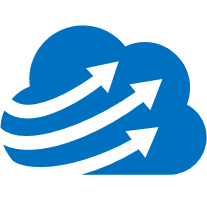
by Contributed | Nov 17, 2020 | Azure, Microsoft, Technology
This article is contributed. See the original author and article here.

As Azure continues to deliver new H-series and N-series virtual machines that match the capabilities of supercomputing facilities around the world, we have at the same time made significant updates to Azure CycleCloud — the orchestration engine that enables our customers to build HPC environments using these virtual machine families.
We are pleased to announce the general availability of Cyclecloud 8.1, the first release of CycleCloud on the 8.x platform. Here are some of the new features in this release that we are excited to share with you.
Welcome Univa Grid Engine
Univa Grid Engine, the enterprise-grade version of the beloved Grid Engine scheduler, joins IBM Spectrum LSF, OpenPBS, Slurm, and HTCondor as supported schedulers in CycleCloud.
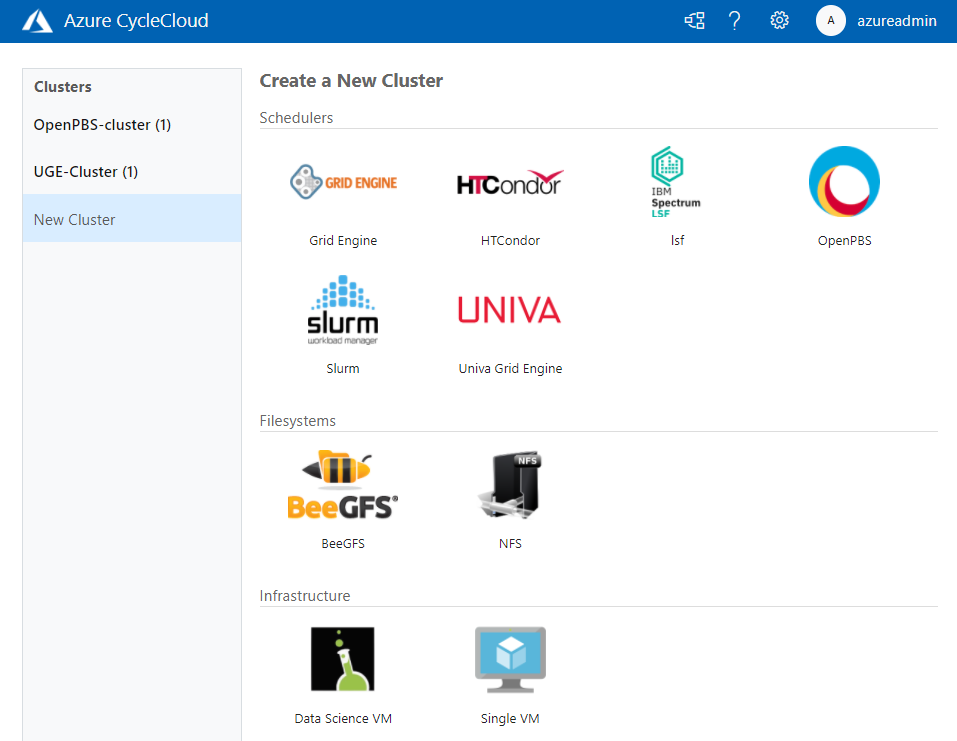
Whether they are tightly-coupled or high-throughput, submit your jobs to your scheduler of choice and CycleCloud will allocate the required compute infrastructure on Azure to meet resource demands, and automatically scale down the infrastructure after the jobs complete. With this addition, CycleCloud is the only cloud HPC orchestration engine that supports all the major HPC batch schedulers, one that you can rely upon to run your production workloads.
Configure Shared Filesystems Easily in the UI
In CycleCloud 8.1, it is simple to attach and mount network attached storage file systems to your HPC cluster. High-performance storage is a crucial component of HPC systems; Azure provides different storage services, such as HPC Cache, NetApp Files, and Azure Blob, that you may use as part of your HPC deployment, with each service optimized for different workloads.

Most workloads typically require access to one or more shared filesystems for common directory or file access, and you can now configure your cluster to mount NFS shares through the CycleCloud web user interface without needing to modify configuration files.
Perform Last-Mile VM Customization with Cloud-Init
CycleCloud Projects is a powerful tooling system for customizing your cluster nodes as they boot-up. In CycleCloud 8, we have included support for a complementary approach with Cloud-Init, a widely-used initialization system for customizing virtual machines.
You can now use the CycleCloud UI or a cluster template to specify a cloud-init config, Shell script or Python script that will configure a VM to your requirements before any of CycleCloud’s preparation steps.
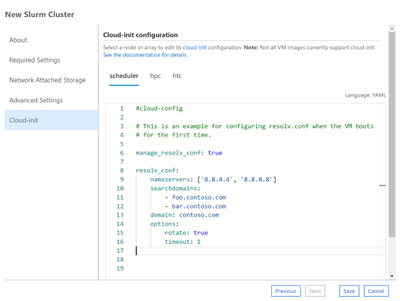
Trigger Actions through Azure Event Grid
CycleCloud 8 generates events when certain node or cluster changes occur, and you can configure your CycleCloud installation to have these events published to Azure Event Grid. With this, you can create triggers for events like SpotVM evictions or node allocation failures, and automatically drive downstream actions or alerts . For example, track Spot eviction rates for your clusters by VM SKU and Region, and use those to trigger a decision to switch to pay-as-you-go VMs.
Azure is the Best Place to Run HPC Workloads
Over the past year, we have been privileged in being able to help our partners run their mission critical HPC workloads on Azure. CycleCloud has been used by the U.S Navy to run weather simulations for forecasting cyclone paths and intensities, by structural biologists to obtain one of the first glimpses at the crucial SARS-Cov-2 Spike protein, by biomedical engineers in performing ventilator airflow simulations ahead of an FDA EUA submission.
With the CycleCloud 8.1 release, we look forward to continuing our support of the HPC community and partners by giving them familiar and easy access to scalable, true supercomputing infrastructure Azure.
Learn More
All the new features in Azure CycleCloud 8.1
Azure CycleCloud Documentation
Azure HPC

by Contributed | Nov 17, 2020 | Azure, Microsoft, Technology
This article is contributed. See the original author and article here.
This is a series of Azure applied workshops where participants will start with the basics of cloud, getting started on Azure, and will then move on to learn about Azure’s Data and Machine Learning tools. This training series is intended for a broad audience including students, researchers, faculty, post-docs, staff and anyone interested in getting started and learning Azure.

This series will get you started on Azure and provide hands on experience managing data and leveraging Azure’s data science and machine learning tools.
The Azure workshop series will focus on the following topics:
1. Getting Started with Azure – Part 1 [1 of 19]
2. Getting Started with Azure – Part 2 [2 of 19]
3. Getting Started with Azure – Part 3 [3 of 19]
4. Getting Started with Azure – Part 4 [4 of 19]
5. Getting Started with Azure – Part 5 [5 of 19]
6. Exercise – Setting up first Subscription [6 of 19]
7. Exercise – Preparing for Machine Learning [7 of 19]
8. Exercise – Preparing for Working with Data [8 of 19]
9. What is Machine Learning? [9 of 19]
10. Azure ML Tools [10 of 19]
11. Exercise – Build a ML Model with Azure [11 of 19]
12. Exercise – Deploy and Consume a ML Model [12 of 19]
13. Using Automated ML [13 of 19]
14. Exercise – Deploy your ML Model on Azure [14 of 19]
15. Benefits Working with Data [15 of 19]
16. Databases [16 of 19]
17. Unstructured Data [17 of 19]
18. Exercise: How to Transform Data [18 of 19]
19. Tools and Integrations [19 of 19]
Additional resources and links:

by Contributed | Nov 17, 2020 | Technology
This article is contributed. See the original author and article here.
Abstract:
We will be covering prerequisites for IEmode, How to configure IEmode and basic knowledge of Enterprise site list manager tool.
We will be looking at troubleshooting issues related to IEMode and why do we use IEMode.
Added advantage about the benefits of IEMode and the limitations of IEMode.
Webinar Date & Time : December 8, 2020. Time 4.00 PM IST (10.30 AM GMT)
Invite : Download the Calendar Invite
Speaker Bio:

Ahmed currently works as a Support Engineer with the Browsers team, NA region. He is one of our senior engineers with expertise in Browser Technology. He is passionate about learning and sharing knowledge. He is very effective in communicating with customers and helping them achieve more.
Devinar 2020
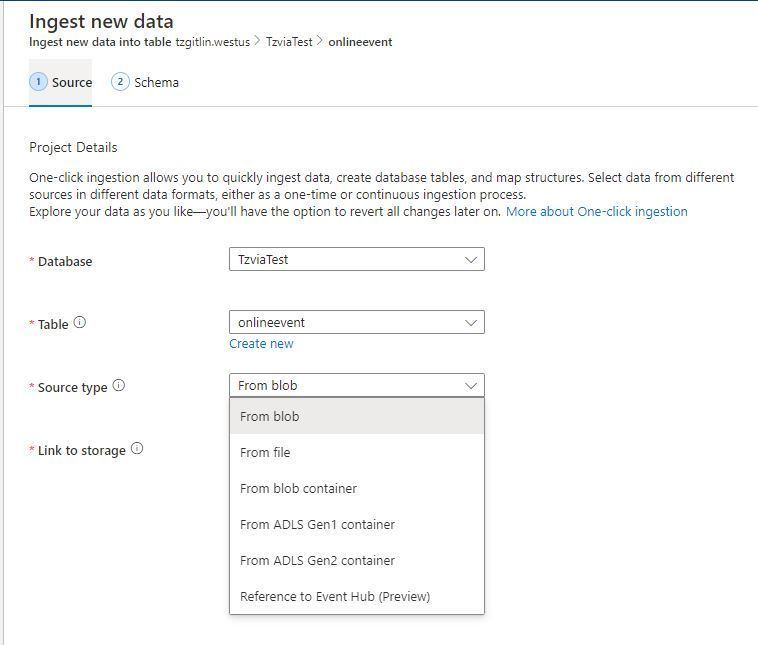
by Contributed | Nov 17, 2020 | Azure, Microsoft, Technology
This article is contributed. See the original author and article here.
Azure Data Explorer offers ingestion (data loading) from Event Hubs, a big-data streaming platform and event ingestion service. Event Hubs can process millions of events per second in near real-time.
The “1-click” tool now intelligently suggests the relevant table mapping definitions according to the Event Hub source, in just 4 clicks.
Click 1:
Click on “Ingest new data” in Kusto Web Explorer (KWE) –> Reference to Event Hub

Click 2:
Connect the Event Hub as a source for continuous event ingestion to a table (new/existing)
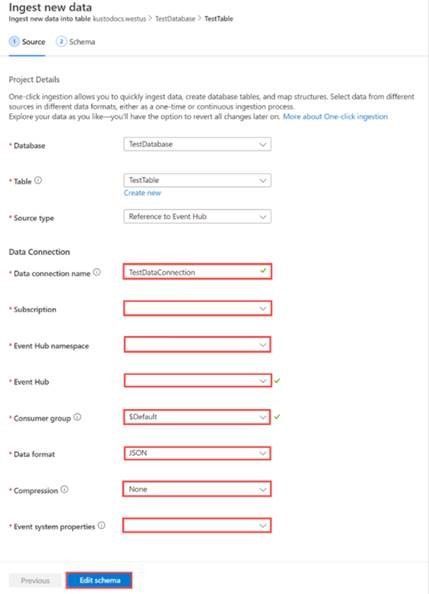
Click 3:
The 1-click tool fetches Event Hub events and infers its schema per the event structure. The user must only verify the inferred schema, and make any necessary adjustments.
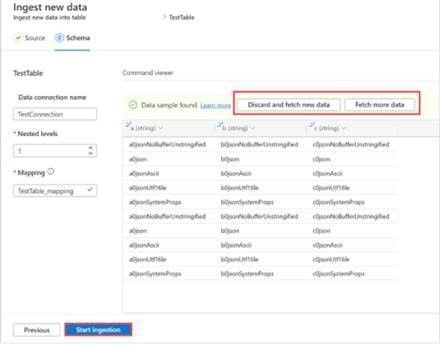
Click 4:
Click on the “Start Ingestion” button to begin inferring the incoming events in either streaming or batching mode, per your needs.
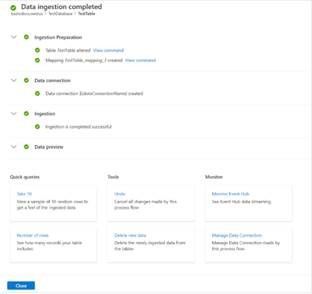
Next time you need to connect Event Hub with Azure Data Explorer, use 1-click for an easy and accurate definition end to end ingestion definition from table to query.
** All actions are revertible by the service (Tools)
read more






Recent Comments